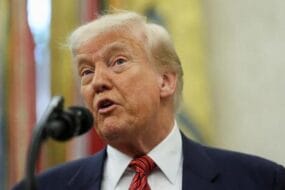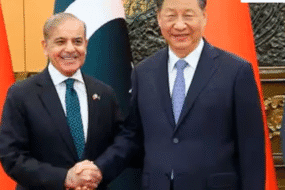- Home
- International Relations
- China’s Strategic Balancing ...

The renewed skirmishes between India and Pakistan have reignited discussions about China’s role in future conflicts involving the two South Asian rivals. Analysts are questioning whether New Delhi must be prepared to face a sustained “two-front threat” from both Pakistan and China. Historically, however, China has chosen a “collusive” approach over direct collaboration in such wars.
From 1962 to 1965: A Growing Sino-Pak Nexus
Following its 1962 war with India, China rapidly deepened ties with Pakistan. In 1963, Pakistan ceded over 5,000 square kilometers of territory in Pakistan-occupied Kashmir (PoK) to China, strengthening Beijing’s stake in regional disputes. During the 1965 Indo-Pak war, although China issued verbal threats and forced India to divert resources to its northern borders, it refrained from entering the conflict directly.
1971 War: Beijing’s Rhetoric, But No Action
The 1971 Bangladesh Liberation War saw China expressing strong diplomatic and rhetorical support for Pakistan, criticizing India’s alliance with the Soviet Union. Despite Premier Chou En Lai’s warning of support if Pakistan’s sovereignty was threatened, China stayed out of the battlefield. It restricted its role to military aid and logistical facilitation, even assembling rescue ships for potential evacuation of Pakistani forces from East Pakistan.
1999 Kargil Conflict: China Maintains Neutrality
During the Kargil War, China’s approach appeared more reserved. The presence of Uyghur militants among Pakistani infiltrators and rising Islamic extremism made Beijing wary of open support. Although China allowed Pakistani overflights and advocated for peaceful resolution, it did not endorse Pakistan’s military actions.
Operation Sindoor & Current Dynamics
In the latest Indo-Pak clashes (May 2025), dubbed “Operation Sindoor” by India, China’s official stance was cautious. While labeling India’s strikes as “regrettable,” Beijing called for calm, avoiding harsh rhetoric. However, Chinese online propaganda platforms painted a starkly different picture, lauding Pakistan’s retaliation and highlighting Chinese-supplied J-10C fighter jets as game-changers.
A History of Strategic Collusion
Over the years, China has supplied Pakistan with significant military hardware—estimated at $8.2 billion since 2015—making Islamabad its top arms buyer. Despite this deep defense relationship, China has never formalized it through a mutual defense pact, unlike the US with its allies.
Conclusion: A Calculated Collusion, Not Open Collaboration
China’s history in Indo-Pak wars illustrates a pattern of strategic collusion—support through arms, diplomacy, and logistics, without risking direct confrontation. While the “all-weather” friendship narrative persists, Beijing has consistently avoided overt military engagement, maintaining its image as a peace-seeking global power while covertly backing its closest South Asian partner.















